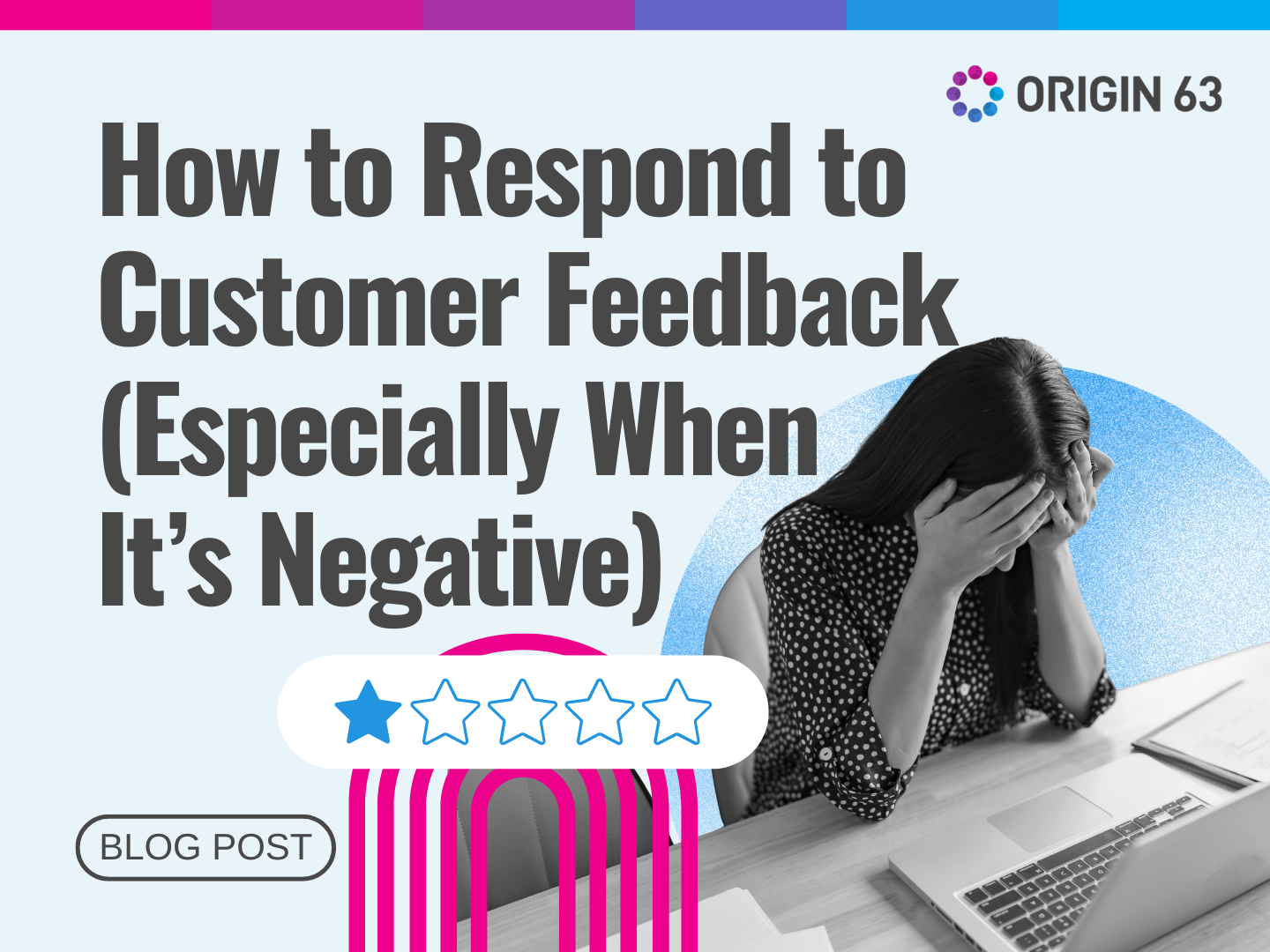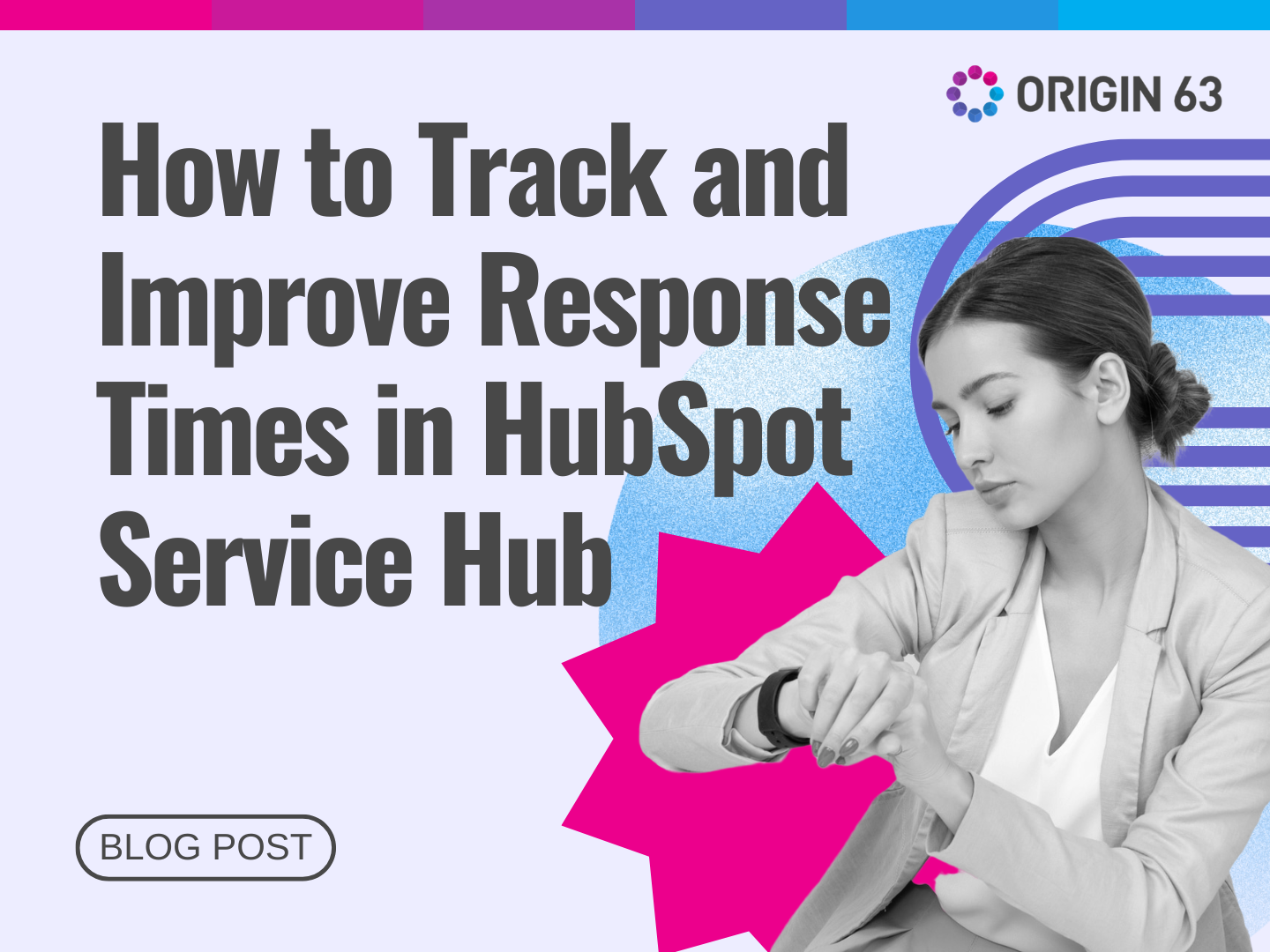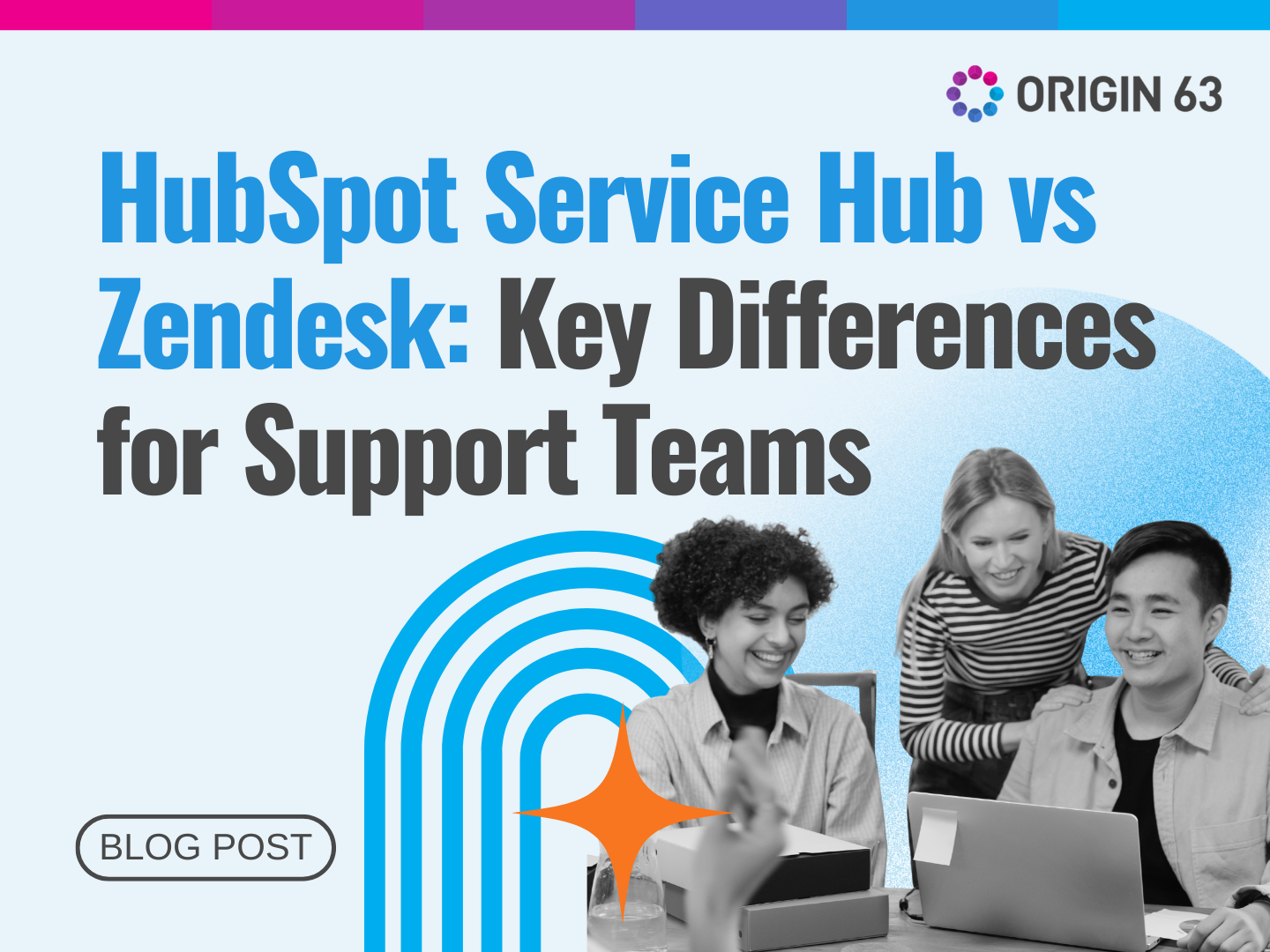In 2024, businesses face multiple challenges that stem from the far-reaching effects of the pandemic. One major issue is the problem of disconnection between teams.
When teams aren't connected, it leads to doing tasks twice, missing out on opportunities, and slowing down work. It doesn't just impact internal operations—it also undermines customer relationships, posing a significant threat to a company’s long-term success.
This blog post will help you figure out if your organization is dealing with this problem and provide some useful tips on how to fix it.
How Do You Know Your Marketing Ecosystem Is Disconnected?

The pandemic forced many organizations to transition to remote work, disrupting traditional team dynamics and communication channels. This shift to remote or hybrid work environments created challenges in effective collaboration.
Identifying the signs of disconnection between your marketing and sales teams is the first step to addressing the issue effectively. Here are three telltale signs that your teams and operations are disconnected, leading to inefficiencies and diminished returns on your marketing efforts:
1. Your marketing data lacks full integration with your tools.
Data is the lifeblood of modern marketing, and if your marketing data isn't seamlessly integrated with the tools your team uses, it can be a huge roadblock.
According to a HubSpot survey, a whopping 31% of marketers don't have a single source of truth for all their marketing data, and only 27% say their marketing data is fully integrated with their tools.
When your marketing data is siloed and not integrated with the tools your team relies on, it becomes a time-consuming and error-prone process to manually gather data from various sources and plug it into different tools.
This not only wastes valuable time but also compromises data quality, leaving marketers with an incomplete picture of their efforts and their impact.
2. You're experiencing diminished ROI from marketing efforts.
If you've noticed a concerning trend of diminishing returns on your marketing investments, it could be a sign of disconnection within your organization.
In a HubSpot survey of professionals tracking Customer Acquisition Costs, a staggering 49% reported an increase in CAC from 2021 to 2022.
It's not necessarily that the marketing channels you've been using have become less effective; rather, consumer behavior and preferences have undergone drastic changes over the past few years.
When marketing efforts are not integrated and aligned across different teams, it’s more challenging to keep pace with the evolving needs and expectations of your target audience.
Siloed operations and lack of collaboration can lead to a disconnect between the messaging, strategies, and tactics employed by the marketing team and the actual needs and desires of the consumers they’re trying to reach.
3. Your teams operate in silos.

Collaboration and alignment between teams are essential for achieving marketing success. However, data silos and communication barriers can hinder this vital collaboration.
HubSpot data shows that a concerning 22% of marketers say data isn't accessibly stored at their company, and the same percentage struggle to obtain the data they need from other teams.
Even when it comes to the critical alignment between sales and marketing teams, just 31% of marketers report strong alignment within their organization.
Operating in silos not only impedes data flow and collaboration but also creates inconsistencies in messaging, customer experiences, and overall brand perception.
This fragmented approach can undermine your marketing efforts and hinder your ability to deliver a cohesive and compelling brand experience to your target audience.
Why Should You Streamline Your Marketing Ecosystem?
Streamlining your marketing ecosystem has become more important than ever. By integrating your various marketing tools and aligning your teams, you can unlock a whole host of benefits that will take your business to new heights.
Here's why you should consider streamlining your marketing ecosystem:
1. Boost Your Revenue
Get ready to see those dollar signs because streamlining your marketing ecosystem can lead to a serious revenue boost.
According to studies, companies that combine sales and marketing efforts can see a whopping 208% increase in revenue compared to the average.
When these two departments work together seamlessly, they can better target potential customers, provide personalized experiences, and drive more sales.
Additionally, aligning sales and marketing efforts ensures that leads generated by marketing campaigns are effectively followed up by the sales team, resulting in higher conversion rates and, ultimately, increased revenue for the company.
2. Enjoy Higher Customer Retention
We all know that retaining existing customers is crucial for any business's success. And guess what? Companies with a strong alignment between their sales and marketing teams enjoy 36% higher customer retention rates.
That's because when your teams are on the same page, you can deliver a consistent and seamless experience that keeps your customers returning.
When sales and marketing teams work together effectively, they can better understand customer needs and preferences, anticipate their expectations, and provide tailored solutions.
3. Close More Deals

Who doesn't love closing more deals? Companies with the strongest sales and marketing relationships have a 67% better close rate.
Their sales reps can spend less time prospecting and more time actually closing those deals. When your marketing and sales teams are in sync, your sales reps have all the information and insights they need to seal the deal.
Sales representatives have access to valuable insights and information generated by marketing efforts. Alignment lets them address concerns and provide relevant solutions during the sales process, ultimately increasing their effectiveness in closing deals.
How to Unify Your Teams
So, you’ve identified whether your teams are disconnected and know that unifying them can lead to business success. However, where do you go from there?
Here are simple steps to help you align everyone:
1. Set Agreed-Upon Goals
Before you can get your teams on the same page, you need to make sure everyone's on the same page — literally.
Set mutually agreed-upon goals and definitions to ensure everyone's working towards the same objectives.
For example, what constitutes a good lead? What are the goals for each stage of the buyer's journey? What does a qualified lead look like?
If your marketing team defines a "qualified lead" as someone who has downloaded a white paper, while your sales team considers a qualified lead to be someone who has scheduled a demo, there will be a disconnect.
By aligning these definitions and goals, you'll eliminate any confusion or miscommunication down the line.
2. Harness Data to Streamline Marketing Strategies
Your sales and customer service interactions, as well as any other customer interaction points, provide you with a prime opportunity to learn more about your customers.
Let's say your customer service team notices that many customers are asking about a specific feature your product doesn't offer.
By sharing this data with your marketing team, they can create targeted content or campaigns that address this pain point and educate customers on workarounds or alternative solutions.
3. Integrate Software Between Teams

One of the biggest obstacles to team alignment is the lack of shared processes and tools between marketing and sales teams. According to studies, the average scaling company has a whopping 242 SaaS tools today. That’s too much!
Imagine your sales team using one CRM tool, your marketing team using a different marketing automation platform, and your customer service team working with another ticketing system.
With so many disparate tools in play, it's virtually impossible to maintain a seamless flow of information and collaboration between teams.
Instead of juggling multiple tools, turn around and invest in a connected platform that streamlines and seamlessly connects your data. This way, all your teams can access and share information easily, fostering collaboration and eliminating data silos.
4. Encourage Open Communication
Last but not least, encourage and facilitate constant, open communication between your teams. Whether it's through regular meetings, messaging channels, or casual check-ins, make sure everyone has a platform to share ideas, voice concerns, and collaborate on projects.
Suppose your marketing team has just launched a new campaign but hasn't communicated the details to your sales team. When a customer calls with questions about the campaign, your sales team is caught off guard and unable to provide accurate information.
This is a prime example of why open communication is so crucial. It helps you break down silos and foster a sense of unity.
Unleash the Power of HubSpot's Unified Service Hub
If you're ready to take your marketing ecosystem to new heights, it's time to embrace the power of HubSpot's Service Hub.
This comprehensive platform is designed to unify your teams, streamline your workflows, and deliver exceptional customer experiences across every touchpoint.
Centralized Data and Insights
One of HubSpot's Service Hub’s advantages is its ability to centralize data and provide valuable insights.
By consolidating customer information from various sources, including your CRM, marketing automation tools, and customer service channels, HubSpot creates a single source of truth for your teams.
This means no more data silos or fragmented customer profiles – everyone has access to the same accurate and up-to-date information.
With these centralized insights, your teams can make informed decisions, personalize customer interactions, and deliver consistent experiences across all channels.
Seamless Tool Integration
Teams often juggle multiple tools and platforms, leading to inefficiencies and disconnects.
Service Hub solves this problem by offering seamless integration with a wide range of tools, including CRMs, marketing automation platforms, social media management tools, and e-commerce platforms.
By bringing all your essential tools under one unified umbrella, HubSpot streamlines your workflows and ensures that data flows seamlessly between systems. This not only saves time and reduces manual effort but also eliminates the risk of data inconsistencies or duplication.
Collaboration and Communication
Effective collaboration and communication are key to a successful marketing ecosystem. HubSpot's Service Hub facilitates this by providing a centralized platform for teams to collaborate, share insights, and communicate in real-time.
Features like shared inboxes, team email, and project management tools enable seamless collaboration, ensuring everyone is on the same page and working towards common goals.
Additionally, HubSpot's reporting and analytics capabilities provide transparency and accountability, allowing teams to track their progress and optimize their strategies accordingly.
Tips for Integrating Marketing Tools with HubSpot
While HubSpot's Service Hub is a powerful platform on its own, its true potential lies in its ability to seamlessly integrate with the other tools and systems that your teams rely on.
To help you get started, here are some tips for integrating tools with HubSpot for a seamless workflow:
Connect Your CRM and Marketing Automation Tools
Start by integrating your CRM and marketing automation platforms with HubSpot's Service Hub. This will ensure that customer data flows seamlessly between systems, providing a comprehensive view of each customer's journey.
Incorporate Social Media Management
Leverage HubSpot's integration with social media management tools to streamline your social media efforts. This allows you to monitor and engage with your audience across multiple platforms, all from a single dashboard.
Sync E-Commerce Platforms
If your business has an e-commerce component, integrate your online store with HubSpot's Service Hub. This will give you valuable insights into customer behavior, purchasing patterns, and revenue data, enabling you to optimize your marketing strategies accordingly.
Embrace Email Marketing and Content Management
HubSpot's Service Hub offers robust email marketing and content management capabilities, allowing you to create and distribute targeted campaigns and content directly from the platform. Integrate these tools with your existing systems to ensure a seamless flow of data and insights.
Streamline Your Operations & Unlock Your Full Potential
A unified and streamlined marketing ecosystem is no longer a luxury – it's a necessity. By breaking down silos, aligning teams, and integrating data and tools, you can unlock a wealth of benefits for your organization.
From boosting revenue and customer retention to closing more deals and delivering exceptional customer experiences, the rewards of unifying your teams are numerous.
Embrace the power of integration, collaboration, and open communication, and watch as your marketing efforts soar to new heights.
Unleash the Power of Unified Teams with HubSpot and Origin 63
Are you ready to take your business to the next level? Partner with HubSpot and Origin 63 to unify your teams and streamline your marketing ecosystem.
With HubSpot's comprehensive suite of tools and Origin 63's expertise in implementation and optimization, you'll have everything you need to break down silos, align teams, and drive success.
Don't let disconnection hold your business back any longer. Embrace the power of a unified marketing ecosystem and watch your revenue, customer retention, and deal closure rates soar.
Contact Origin 63 today and take the first step towards unlocking your business's full potential.













.png?width=90&height=90&name=Arrows%20Partner%20Badge-test%20(1).png)

